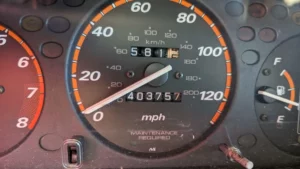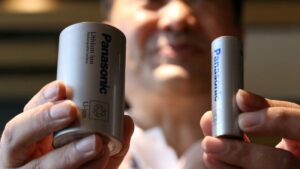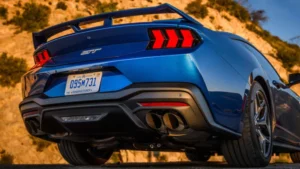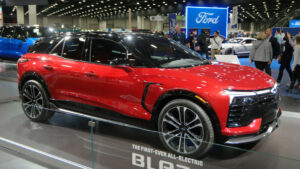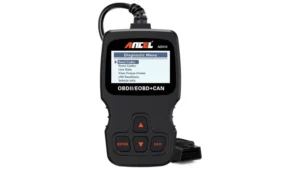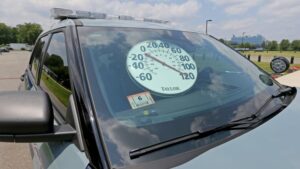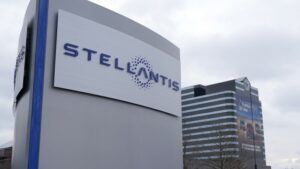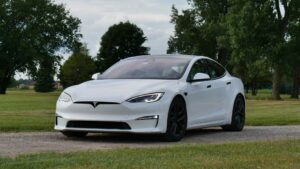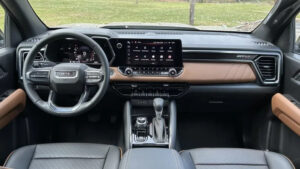While New York City’s push to charge motorists $15 to enter Manhattan’s congested central business district next year inched forward Thursday with the release of a recommended toll structure, a pending lawsuit by New Jersey Gov. Phil Murphy has put that timeline in limbo.
The Metropolitan Transportation Authority, which runs New York City’s subways, buses and commuter rail lines, wants to start charging the congestion pricing as soon as late Spring so it can use the estimated $1 billion a year it would generate to modernize a more than 100-year-old system.
Murphy sued in July, arguing that congestion pricing will force New Jersey commuters who drive into the city to pay for the MTA’s expenses. He wants a court to require a longer environmental analysis of the tolling program, which would delay implementation.
That may mean the MTA would need to wait longer than planned for the new revenue. The agency has already said that without the flow of money, it would need to sell bonds that are repaid from its operating budget earlier than anticipated, costing as much as $300 million a year in additional debt-service expenses. It also delayed a $1.3 billion project to modernize signals on the A and C subway lines in Brooklyn because its funding relies on congestion pricing receipts.
“We want to see this implemented as quickly as possible,” said Tom Wright, president and chief executive officer at Regional Plan Association, a nonprofit organization that promotes economic health and environmental resiliency in the New York City area. “Every day this gets delayed, it really does cost the MTA and it costs people in increased traffic and worsened air quality.”
New York City’s plan — the first of its kind in the US — would charge motorists entering south of 60th street into Manhattan’s central business district. The MTA will then borrow against that revenue stream to extend the Second Avenue subway line to 125th street, add more elevators and escalators to subway and train stations and help strengthen the transit system against extreme weather.
About 900,000 vehicles enter the central business district on weekdays, according to the MTA. It anticipates the proposed toll would reduce that amount by 17%, or about 150,000 fewer vehicles every day. Ridership on mass-transit throughout the region would increase by 1.5% to 2%, or nearly 110,000 additional weekday rides.
“Everyone in the region deserves access to more reliable mass transit, but placing an unjustified financial burden on New Jersey commuters is wrong,” Murphy said in a statement late Wednesday. “We are left with no choice than to continue addressing our concerns through litigation.”
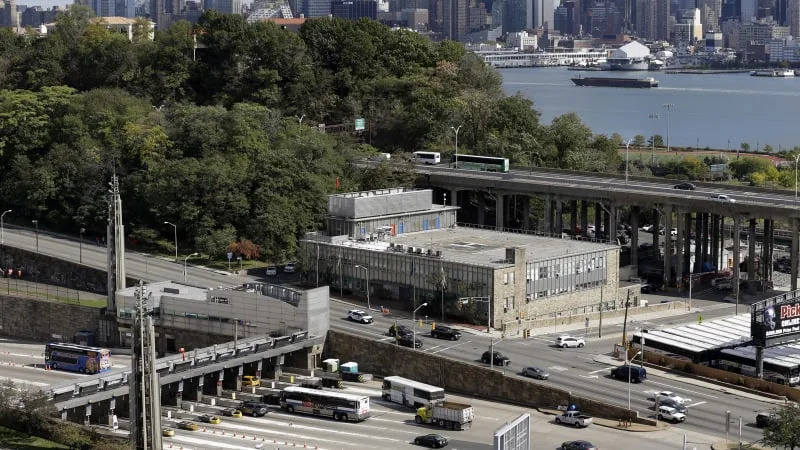
Tolling proposal
A six-member Traffic Mobility Review Board has been studying how best to implement the new fee for months and on Thursday released its recommendations on how to structure the program.
The TMRB recommended charging passenger cars $15 once a day to enter the district while trucks pay $24 to $36, according to the board’s report to the MTA. There’s a 50% increase for drivers without an E-ZPass. The fee would apply from 5 a.m. to 9 p.m. on weekdays and between 9 a.m. to 9 p.m. on weekends, with tolls 75% lower during the night.
The traffic board also suggests giving a $5 credit to passenger vehicles entering the district through four tunnels: Queens-Midtown connecting Manhattan to Long Island City, the Hugh L. Carey — a bypass to downtown Manhattan from Brooklyn, and both the Holland and Lincoln, which link to New Jersey. Small trucks would get a $12 credit while large trucks and tour buses would receive $20.
New York City Mayor Eric Adams Thursday described the proposed $15 fee as the beginning of a conversation and raised the need to exempt certain drivers going to medical appointments. But he stressed that commuters who chose to drive for ease, must pay the toll.
“We don’t want to overburden working class New Yorkers, but those who are just driving for convenience, whatever the price is, they need to pay that price,” Adams told reporters Thursday.
John Samuelsen, Transport Workers Union’s international president and a former member of the TMRB, pushed back against the recommendations. The MTA should increase service now with more express bus routes in underserved neighborhoods, more frequent local bus service and expanded hours, Samuelsen wrote in a letter dated Thursday where he gave his resignation.
“We have a congestion pricing plan that is all stick and no carrot, a half-way scheme that falls well short of the mark,” Samuelsen said in a statement. “It will definitely raise revenue. But raising revenue should not have been given priority status over persuading as many New Yorkers as possible to switch from cars to public transit, thus more significantly reducing traffic congestion.”
- SEO Powered Content & PR Distribution. Get Amplified Today.
- PlatoData.Network Vertical Generative Ai. Empower Yourself. Access Here.
- PlatoAiStream. Web3 Intelligence. Knowledge Amplified. Access Here.
- PlatoESG. Carbon, CleanTech, Energy, Environment, Solar, Waste Management. Access Here.
- PlatoHealth. Biotech and Clinical Trials Intelligence. Access Here.
- Source: https://www.autoblog.com/2023/12/03/nyc-congestion-charge-new-jersey-lawsuit/
- :has
- :is
- :not
- :where
- ][p
- $1 billion
- 000
- 1
- 110
- 150
- 2%
- 9
- a
- About
- access
- According
- add
- Additional
- addressing
- against
- agency
- AIR
- All
- already
- also
- amount
- an
- analysis
- and
- Anticipated
- anticipates
- Apply
- appointments
- ARE
- AREA
- AS
- Association
- At
- authority
- Avenue
- back
- because
- been
- Beginning
- BEST
- between
- Billion
- board
- Bonds
- borrow
- both
- Brooklyn
- budget
- burden
- bus
- Buses
- business
- but
- by
- CAN
- cars
- central
- certain
- charge
- charging
- chief
- Chief Executive
- chief executive officer
- choice
- chose
- City
- class
- commuters
- Concerns
- congestion
- Connecting
- continue
- convenience
- Conversation
- Cost
- Costs
- Court
- credit
- dated
- day
- definitely
- delay
- Delayed
- described
- deserves
- district
- does
- Dont
- Downtown
- drive
- drivers
- driving
- during
- Earlier
- ease
- Economic
- Elm
- Enter
- entering
- environmental
- eric
- Eric Adams
- estimated
- Every
- every day
- executive
- Executive Officer
- exempt
- expanded
- expenses
- express
- extend
- extreme
- Falls
- fee
- fewer
- financial
- First
- flow
- For
- Force
- Former
- Forward
- four
- frequent
- from
- funding
- gave
- generate
- get
- given
- Giving
- going
- Have
- he
- Health
- help
- his
- Holland
- HOURS
- How
- How To
- HTTPS
- implement
- implementation
- implemented
- in
- Increase
- increased
- International
- into
- island
- IT
- ITS
- Jersey
- jpg
- July
- just
- Kind
- large
- Late
- lawsuit
- left
- letter
- Line
- lines
- LINK
- Litigation
- local
- Long
- longer
- lower
- many
- mark
- Mass
- May..
- Mayor
- mean
- medical
- member
- million
- mobility
- modernize
- money
- months
- more
- much
- must
- nearly
- Need
- New
- New Jersey
- New York
- new york city
- next
- night
- no
- Nonprofit
- now
- of
- Officer
- on
- once
- operating
- or
- organization
- our
- over
- Pay
- pending
- People
- PHIL
- placing
- plan
- planned
- plato
- Plato Data Intelligence
- PlatoData
- PoS
- possible
- president
- price
- pricing
- priority
- Program
- project
- promotes
- proposed
- public
- public transit
- Push
- pushed
- put
- quality
- quickly
- Rail
- raise
- raised
- raising
- really
- receipts
- receive
- recommendations
- recommended
- reduce
- reducing
- region
- regional
- release
- released
- reliable
- report
- require
- Resignation
- revenue
- review
- rides
- routes
- runs
- s
- Said
- scheme
- SEC
- Second
- see
- sell
- service
- Short
- should
- signals
- significantly
- small
- So
- Soon
- South
- spring
- start
- Statement
- Stations
- Status
- Stick
- stream
- street
- Strengthen
- structure
- Studying
- Subways
- sued
- Sues
- Suggests
- Switch
- system
- than
- that
- The
- then
- they
- this
- those
- Through
- throughout
- thursday
- Thus
- timeline
- to
- told
- tom
- Tour
- traffic
- Train
- transit
- transport
- transportation
- Trucks
- underserved
- us
- use
- Vehicles
- wait
- want
- wants
- Weather
- Wednesday
- WELL
- whatever
- which
- while
- WHO
- will
- with
- without
- workers
- working
- would
- Wright
- Wrong
- wrote
- Yahoo
- year
- york
- zephyrnet

